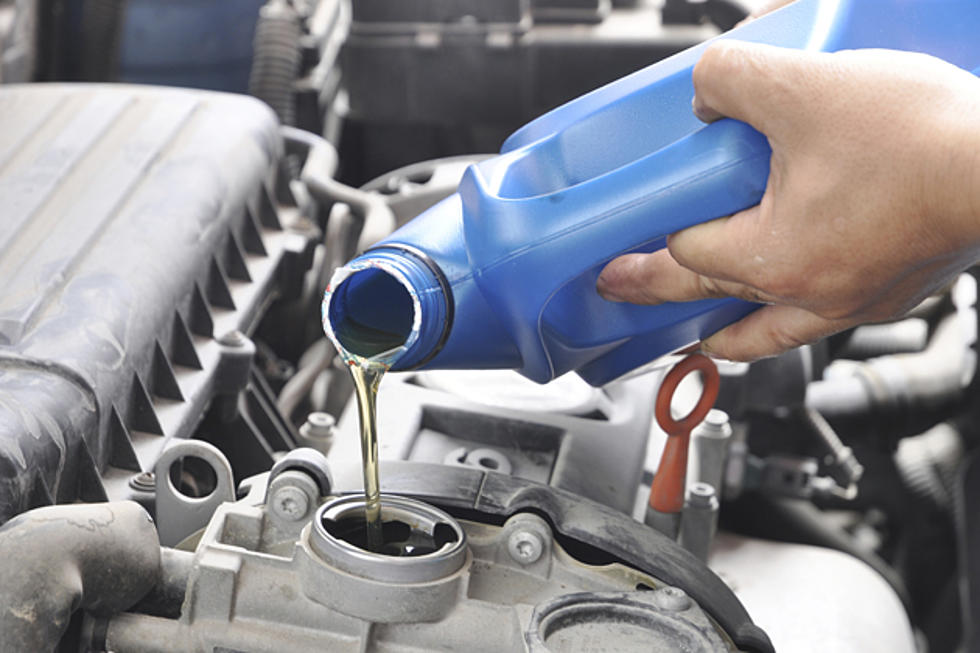
Keep Your Car In Shape This Spring by Maintaining These 7 Fluids
A great way to keep your car in good running shape between major tune-ups is to check the fluids yourself. It’s an inexpensive and simple way to prevent engine wear or damage, and save money at the auto shop. While checking the fluids in your car is a fairly straightforward process, it does take some know-how.
Here are seven fluids you should pay attention to to keep your car running right:
1. Oil
Your engine needs oil to keep the moving parts lubricated. To check the oil, first take your car for a short drive, then wait about five minutes so it can cool down. Under the hood, the dipstick in the oil tank should be close to the front of the engine, near you. It’s usually pretty easy to find. Pull out the dipstick, wipe it with a cloth or towel, and then dip it all the way back into the oil tank. Pull it back out and see where the oil line is. There should be a notch in the dipstick to show you where a safe oil level should be. If it seems low, check the cap or your car manual for the type of oil you should use and then add some yourself.
2. Radiator Fluid
The radiator fluid keeps your engine from overheating. If you run low, you risk overheating in traffic and getting stranded on the side of the road. Check this fluid when your car has been driven, not when it’s cold. The contents of the radiator are pressurized, so never remove the cap when the engine is hot or running. You’ll likely find the radiator cap in the front and middle of the engine compartment. Open it carefully with a rag, and look into the radiator to see if you can see the coolant. If you can’t see it near the top, you’ll need to add more.
3. Transmission Fluid
Transmission fluid keeps your transmission lubricated, which can prevent many expensive issues from developing. The other dipstick in your engine (not the oil one) is for your transmission fluid. Much like the oil, to check it you just remove the dipstick, wipe it off with a rag or cloth, and put it back in the tank. Pull it out again to see how high the fluid reaches on the stick. You also want to check the quality of the fluid. Get a bit on your fingers and rub it around to see if it is pinkish or clear like it should be. If it smells burnt or has particles in it, it’s time for a change.
4. Power Steering Fluid
Power steering fluid keeps your car’s power steering working by keeping it lubricated, adding power to your ability to control the car’s wheels. To check the power steering fluid, find the reservoir under the hood. It’s usually on the passenger side. Either way, it’s likely to be near the belts and the cap will probably say “steering” on it. Most cars have an opaque container, so you should be able to see the fluid level without opening the cap. Otherwise, before opening the cap, clean the area around it with a cloth so dirt doesn’t get into the system. Then, open the cap and use the dipstick the same way you would with the oil tank. If the fluid is low, you can easily add more yourself. You may also want to check around the reservoir to make sure there isn’t a leak.
5. Brake Fluid
Your brake fluid is pressurized and adds power to your braking and keeps you from running into other vehicles. The brake fluid reservoir is usually near the back of the engine compartment. Clean off the outside before you open the tank, as any dirt in the fluid can be dangerous in your system. To open the reservoir just unscrew the cap or use a screwdriver to pry off a clamp that may be holding it in place. Look inside to see where the fluid level is. It should be within about a half-inch of the cap. If it isn’t, check your manual to see what kind of fluid you should add. Also check the color of the brake fluid—if it looks dark in color, you should have a mechanic replace it.
6. Air Conditioning Coolant
When the weather warms up, you’ll want to check the coolant (sometimes called refrigerant or Freon) level in your air conditioning system to make sure it’s ready to work. Checking this fluid can be a bit complicated, but it’s better than having a mechanic charge you for putting more in when it’s not needed. Before you begin, you’ll need to get the proper A.C. gauge and thermometer from an auto-parts store. If it turns out your coolant level is low, you can easily recharge the system with supplies from the auto parts store.
7. Washer Fluid
The windshield-washer fluid doesn’t keep your engine running, but it’s really helpful for making it easier for you to see while you’re driving. Checking the washer fluid is easy. Most cars have opaque washer fluid tanks with a label on the cap like “windshield” or “washer.” You should be able to see inside without removing the cap. Otherwise it should just twist off, since the fluid isn’t pressurized or dangerous. If you need more fluid, don’t just use soap and water. Get some washer fluid that's formulated to handle bugs and road grime. If you’re completely out and in for a dirty drive, the window cleaner you use at home can work until you can get washer fluid.

